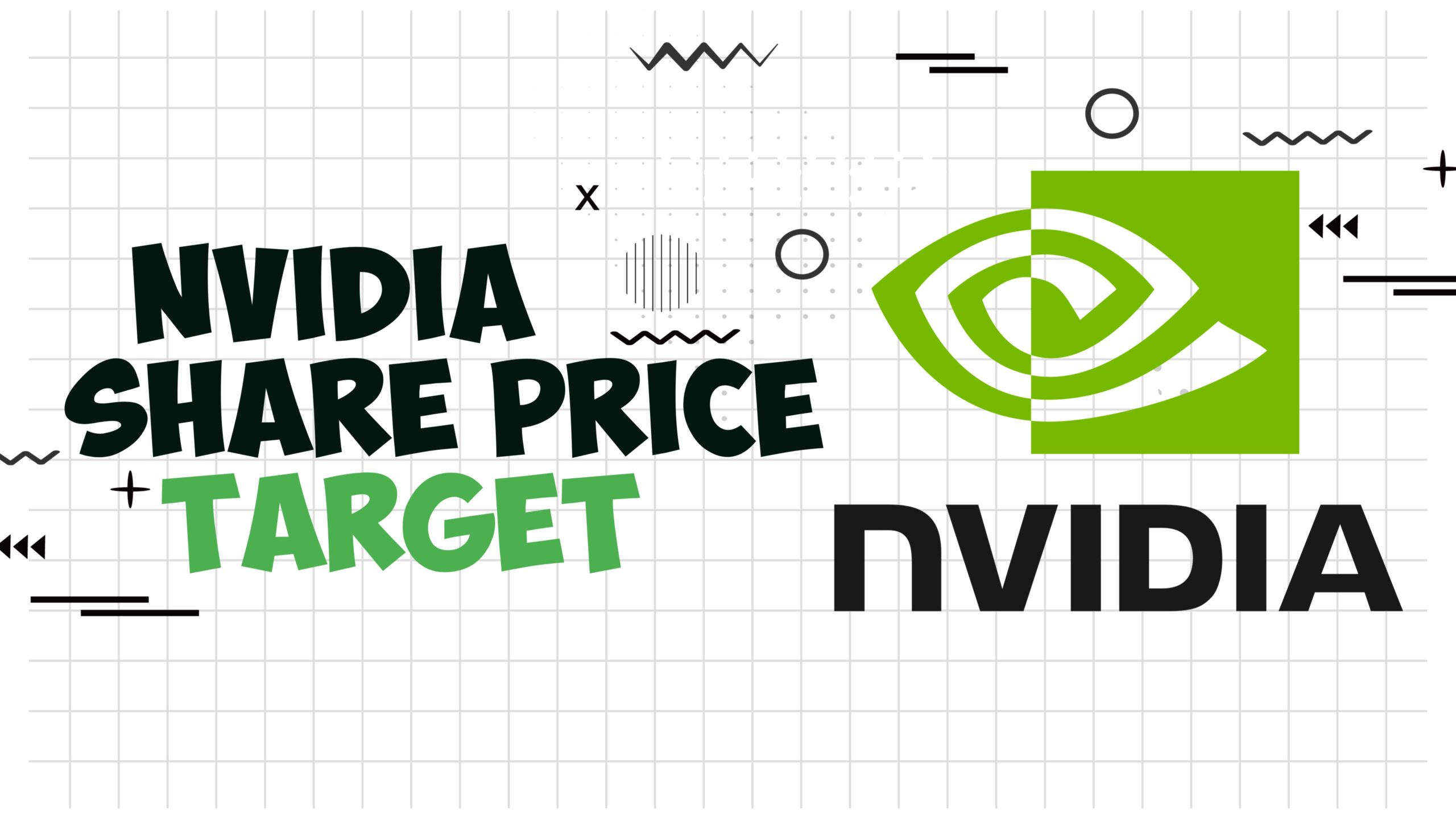Nvidia: The Powerhouse Driving Innovation
Nvidia, once primarily known for its gaming graphics cards, has evolved into a technological behemoth reshaping industries worldwide. At the core of its success lies an unwavering commitment to pushing the boundaries of computing power. From gaming and virtual reality to artificial intelligence and autonomous vehicles, Nvidia’s innovations are driving the next wave of technological advancements.
The company’s groundbreaking GPUs (Graphics Processing Units) have become the engine powering complex computations, from training neural networks to rendering stunning visuals. Nvidia’s CUDA platform, a parallel computing architecture, has opened up new possibilities for developers and researchers to tackle challenging problems.
Beyond gaming, Nvidia is making significant strides in data centers, powering the AI revolution. Its data center GPUs are the backbone of cloud computing, enabling businesses to harness the power of data and extract valuable insights. Additionally, Nvidia’s DRIVE platform is at the forefront of autonomous vehicle technology, bringing self-driving cars closer to reality.
As we delve deeper into the world of Nvidia, we will explore its impact on various sectors, its role in shaping future technologies, and the challenges and opportunities that lie ahead.
Would you like to focus on a specific aspect of Nvidia, such as its role in AI, gaming, or autonomous vehicles?
TABLE OF CONTENT :
- Company Fundamental Analysis
- Key factors to consider
- Company Performance
- Industey Analysis
- Management Quality
- Technical Analysis
- Additional Consideration
- Share Price Prediction
- Important Notes
- Disclaimer
Nvidia Company Fundamental Analysis
Profitability
| Gross Profit Margin (TTM) | 65.2% (Very High) |
| Net Profit Margin (TTM) | 57.1% (Very High) |
These profitability ratios indicate that Nvidia is very efficient at generating profits from its revenue. The company is able to keep a significant portion of each dollar it earns as net profit. This is a positive sign for investors, as it suggests that Nvidia is a well-managed company with a strong business model.
Liquidity
| Current Ratio | 3.53 (Good) |
| Quick Ratio | 3.14 (Good) |
These liquidity ratios indicate that Nvidia has sufficient short-term assets to cover its short-term liabilities. This suggests that the company is financially healthy and able to meet its upcoming obligations.
Solvency
| Debt-to-Equity Ratio | 0.72 (Healthy) |
| Interest Coverage Ratio | 27.4x (Very High) |
* : These solvency ratios indicate that Nvidia has a manageable level of debt and is able to easily cover its interest expenses. This suggests that the company is financially stable and has a low risk of defaulting on its debt obligations.
Valuation
| P/E Ratio (TTM) | 65.97 (High) |
| Price-to-Book Ratio (TTM) | 22.8 (High) |
* : These valuation ratios suggest that Nvidia’s stock price is currently trading at a premium relative to its earnings and book value. This could be due to the company’s strong growth prospects or its leadership position in the GPU market. However, it also indicates that there may be limited upside potential in the near term.
Growth
| Revenue Growth (YoY) | 262% (Very High) |
| Market Size (Global Semiconductor Market) | $590 billion (estimated 2024) |
| Growth Potential (CAGR) | 13.2% (estimated 2024-2029) |
* : Nvidia has a history of very high revenue growth, and the global semiconductor market is expected to continue growing at a healthy pace in the coming years. This suggests that Nvidia has significant growth potential ahead.
Competitive Landscape
* Competitive Landscape: Intense competition from AMD, Intel
The semiconductor industry is highly competitive, and Nvidia faces competition from AMD and Intel. However, Nvidia has a strong track record of innovation and is well-positioned to maintain its market share in the GPU market.
Management Quality
* Management Experience: Jensen Huang (CEO) has over 20 years of experience in the semiconductor industry.
* Management Track Record: Led Nvidia to significant growth and innovation.
* Management Strategic Vision: Focused on AI, data center, and autonomous vehicle markets.
Nvidia appears to have a strong management team with a proven track record of success. The company’s focus on high-growth markets such as AI, data centers, and autonomous vehicles is a positive sign for investors.
Overall, Nvidia’s financial analysis reveals a company with strong profitability, liquidity, solvency, and growth potential. However, the company’s stock price is currently trading at a premium valuation. Investors should carefully consider these factors before making an investment decision.
Important Note: This analysis is based on publicly available information and analyst reports. It is not intended to be financial advice.
Technical Analysis
Overall Trend
* Short-term: Negative. The stock has experienced a pullback from recent highs.
* Long-term: Positive. The overall trend remains bullish, supported by long-term moving averages.
Key Technical Indicators
* RSI: Currently in oversold territory, suggesting potential for a rebound.
* MACD: Showing a bearish crossover, indicating potential downward pressure.
* Moving Averages: Short-term moving averages are below long-term moving averages, suggesting a bearish bias in the short term.
Support and Resistance Levels
* Support: $100-$110 range
* Resistance: $120-$130 range
Potential Scenarios
* Bullish Scenario: A strong break above the $120-$130 resistance level could signal a resumption of the uptrend.
* Bearish Scenario: A breakdown below the $100-$110 support level could indicate further downside potential.
Cautionary Notes
* The tech sector, including Nvidia, has been volatile recently due to macroeconomic factors and interest rate hikes.
* While technical analysis provides valuable insights, it’s essential to consider fundamental factors and overall market conditions.
Visual Analysis is Crucial
To make informed decisions, it’s highly recommended to analyze the stock’s chart using various technical indicators and patterns.

Remember: Technical analysis is just one piece of the puzzle. Combining it with fundamental analysis and considering other factors like company performance, industry trends, and economic conditions is crucial for making sound investment decisions.
Would you like to focus on a specific technical indicator or pattern for Nvidia? Or perhaps you’d like to compare Nvidia’s technical analysis to that of its competitors?
Additional Considerations for Nvidia
While we’ve covered fundamental and technical analysis, there are additional factors to consider when evaluating Nvidia:
Qualitative Factors
* Competitive Landscape: Nvidia faces stiff competition from AMD and Intel in the GPU market. Assessing their competitive positioning, R&D spending, and market share is crucial.
* Technological Leadership: Nvidia’s ability to innovate and maintain its technological edge is paramount. Assessing its patent portfolio and research initiatives can provide insights.
* Management Quality: A strong management team can significantly impact a company’s performance. Evaluating the experience, track record, and strategic vision of Nvidia’s leadership is important.
* Brand Reputation: A strong brand can create a competitive advantage. Assessing Nvidia’s brand equity and customer loyalty can provide valuable information.
External Factors
* Economic Conditions: Economic downturns can impact consumer spending on discretionary items like gaming hardware, affecting Nvidia’s revenue.
* Government Regulations: Changes in government policies, such as export controls or trade tariffs, can impact Nvidia’s operations and supply chain.
* Industry Trends: Keeping abreast of trends in the semiconductor industry, AI, and autonomous vehicles is crucial for understanding Nvidia’s growth prospects.
Risk Assessment
* Valuation Risk: Nvidia’s stock price has been volatile. Assessing the company’s valuation relative to its peers and historical multiples is important.
* Technological Risk: Rapid technological advancements can disrupt Nvidia’s business model. Assessing the company’s ability to adapt to changing technologies is crucial.
* Supply Chain Risk: Disruptions in the supply chain can impact Nvidia’s production and profitability. Assessing the company’s supply chain diversification and risk management strategies is important.
By considering these additional factors, investors can gain a more comprehensive understanding of Nvidia’s investment potential and risks.
Share Price Prediction
| January 2025 | $140 – $147 |
| January 2026 | $169 – $175 |
| January 2027 | $185 – $210 |
| January 2028 | $270 – $280 |
| January 2029 | $295 – $380 |
Important Notes About Nvidia
Company Overview
* GPU Dominance: Nvidia is a global leader in graphics processing units (GPUs), a critical component for various industries.
* AI Focus: The company has a strong focus on artificial intelligence (AI) and has become a key player in the AI hardware and software ecosystem.
* Data Center Growth: Nvidia’s data center business has seen significant growth due to the increasing demand for AI and high-performance computing.
* Automotive Market: The company is actively involved in the autonomous vehicle market through its DRIVE platform.
Investment Considerations
* High Valuation: Nvidia often trades at a premium valuation due to its strong growth prospects.
* Competitive Landscape: The semiconductor industry is highly competitive, with AMD and Intel as key rivals.
* Economic Cycles: Nvidia’s performance can be influenced by economic conditions, as consumer spending on discretionary items like gaming hardware can fluctuate.
* Technological Risk: Rapid advancements in technology can impact Nvidia’s product lifecycle and market position.
Key Financial Metrics
* Strong Profitability: Nvidia consistently demonstrates high profit margins.
* High Growth: The company has a history of delivering strong revenue and earnings growth.
* Significant R&D Investment: Nvidia invests heavily in research and development to maintain its technological leadership.
Technical Analysis Considerations
* Volatility: Nvidia’s stock price can be volatile due to its growth nature and market sentiment.
* Chart Patterns: Identifying support and resistance levels, as well as chart patterns, can be helpful in technical analysis.
* Indicators: Using indicators like RSI, MACD, and moving averages can provide additional insights into price trends.
Additional Factors
* Qualitative Analysis: Assessing management quality, competitive position, and brand reputation is crucial.
* External Factors: Considering economic conditions, government regulations, and industry trends is essential.
* Risk Management: Understanding the risks associated with investing in Nvidia, such as valuation risk and technological risk, is important.
Disclaimer:
The information provided on this blog is for educational and informational purposes only. It should not be construed as financial advice, investment advice, or any other form of recommendation regarding the suitability or profitability of any particular investment or investment strategy.
Investing in securities, cryptocurrencies, commodities, and other financial instruments inherently involves risks, including the potential loss of principal. The market value of investments can fluctuate and may result in substantial losses. Past performance is not necessarily indicative of future results.
The content presented in this blog is based on information considered reliable, but the accuracy, completeness, or timeliness of the information cannot be guaranteed. The authors and creators of this blog make no warranties or representations as to the accuracy, adequacy, or completeness of the information provided. They accept no liability for any errors or omissions in the content or for any damages or losses arising from the use of the information provided herein.
The opinions expressed in this blog are those of the authors and do not necessarily reflect the views of any affiliated organization or entity. The authors are not financial advisors, investment advisors, or licensed professionals. Readers are strongly encouraged to conduct their own research and due diligence, or consult with a qualified financial advisor or investment professional before making any investment decisions.
All investment decisions and actions taken by readers of this blog are solely their responsibility. By accessing and using this blog, you agree to release the authors and creators from any and all claims, losses, expenses, or liabilities that may arise from your use of the information provided.
The authors may hold positions in the securities or investments mentioned in the blog posts. However, the inclusion of specific securities or investments should not be construed as an endorsement or recommendation to buy, sell, or hold these investments.
The content of this blog is subject to change without notice. The authors reserve the right to modify, update, or remove any information or content provided on this blog at their sole discretion.
—
This comprehensive disclaimer addresses the informational nature of the blog content, emphasizes the risks associated with investing, and reinforces the importance of independent research and professional advice.

